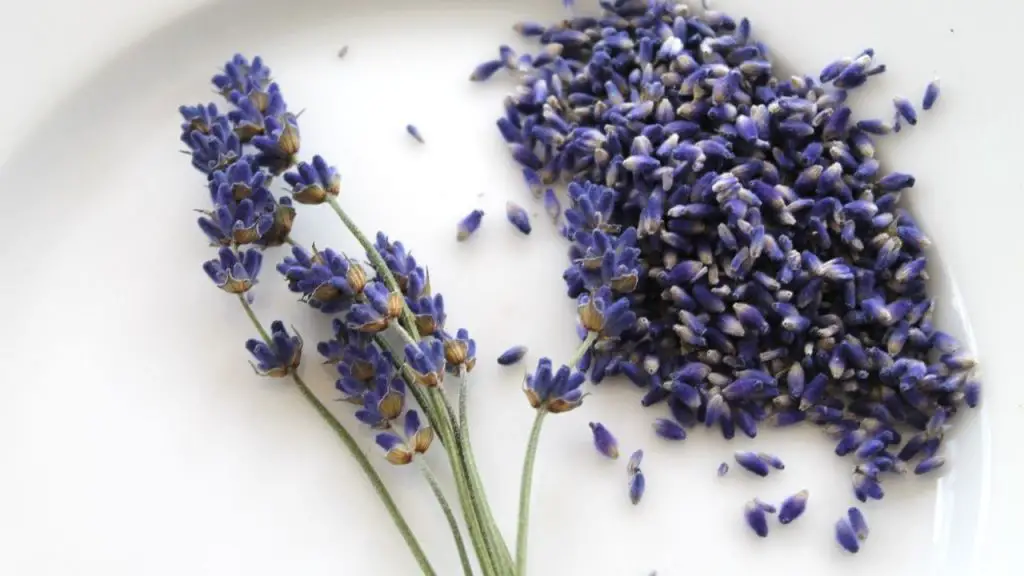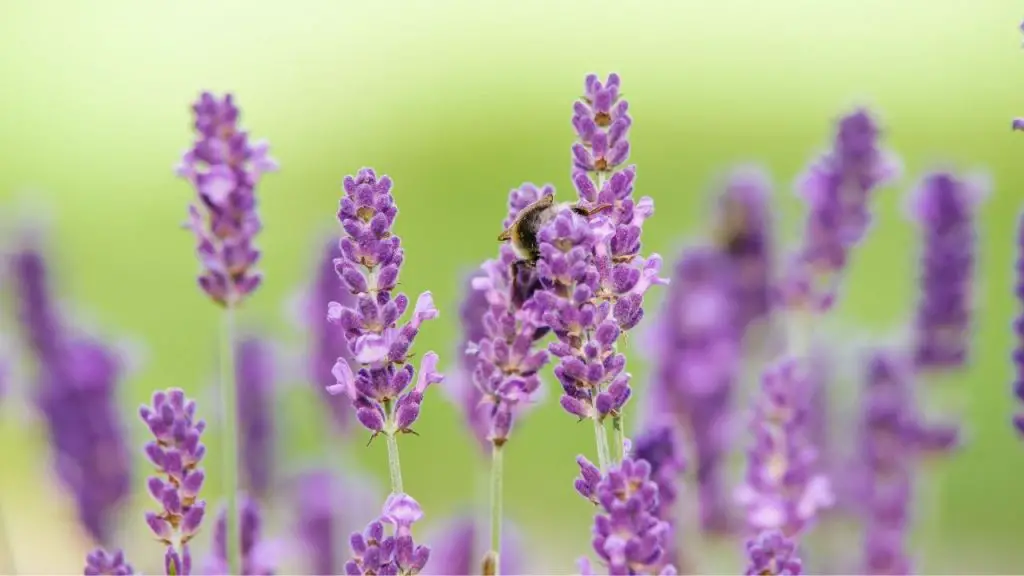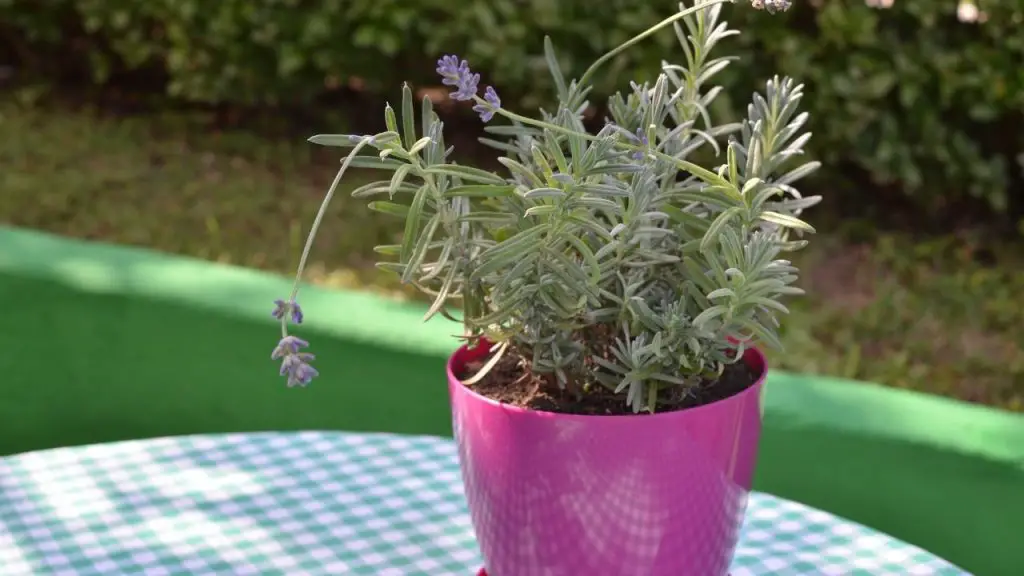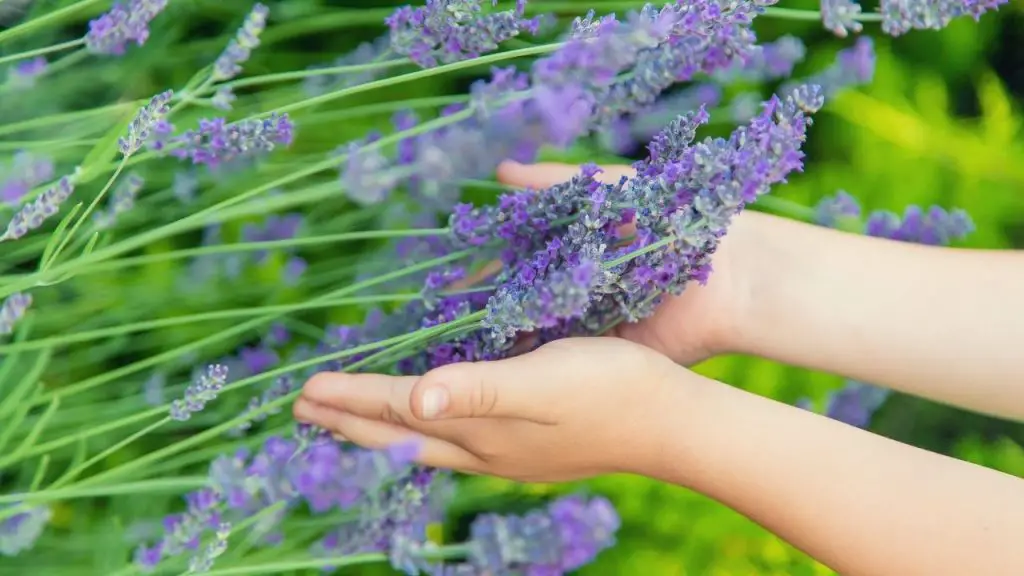Lavender is a pretty, aromatic herb which, depending on the particular species, emits violet, yellow or white flowers. Most growers normally germinate lavender from a part of the plant, but the seeds may also be cultivated to germinate the whole plant.
In this guide, we will see How To Grow Lavender From Seeds? starting lavender from seed is often not effective and very slow, but the procedure is always less expensive than the purchase of cuttings and pre-started lavender plantations. If you want to extract the lavender seeds on your own, be sure to remember that certain plants would not yield or sow true seeds that are original to the lavender plant.
The very first phase in growing lavender from seed or germinating lavender from its seed is to select a variation of seeds and germinate the seeds. Munstead and Lavender Lady seem to be some good variations of lavender to begin seed planting with. The germination of lavender seeds will require one to three months, so consider early plantation and be optimistic.
- How to grow lavender from seeds
- How to collect lavender seeds
- Germinating lavender seeds paper towel
- How to grow lavender indoors
- How to refrigerate lavender seeds
Is Lavender Hard To Grow From Seed?

It is not challenging to grow lavender plants from seed, but time, persistence is needed. Even some additional space is required for your seed trays.
Utilize low-lying seed trays and protect the seed by covering it with a slight amount of soil. Use mild soil or a mixture of vermiculite.
Maintain the seeds in a damp condition but not wet too much. A sunny place is an excellent place to keep the soil moist and warm enough for the lavender seeds.
Your lavender young plants are ready to be transferred once many leaves per plant have been produced.
Your first year of successfully growing lavender from seeds might not be spectacular, but it will be massive by year two with large and fascinating lavender plants.
Lavender seeds and plants have the biggest threat of fungi. Maintain a wet soil mix, but have sufficient airflow to mitigate disease occurrences.
Different Types Of Lavenders
There seem to be 450 lavender variants, classified into 45 species. There is the possibility of more kinds of lavender that are yet to be found, particularly as there are a couple of hybrids. Below are some varieties of Lavender Plants;
Ballerina Lavender Plant
It is a French Lavender. This French lavender has distinctive bulbs and flowering white flowers which, as the plants grow up, become pink and violet.
Anouk Lavender Plant
The Anouk varieties flourish from earliest to mid-spring, faster than many of the French lavender, and have plump deeper violet heads with a light purple petiole.
Betty’s Blue Lavender Plant
This type of Lavender plant is a typical English lavender Plant. Betty’s Blue is very broad and rich purple-blue. The plant is small and dome-shaped. The sweet scent of this lavender type is special in the mid-summer.
Should Lavender Seed Be Soaked Before Planting?
Water the seeds lightly
Watering the seeds in the morning will ensure the drying out of the soil before the evening. Keep the growing environment moist and not damp. The fungus will thrive in soil that is too moist and cold, and fungus will damage your seeds.
How To Best Collect Lavender Seeds For Germinations?
Lavender seeds can be easily harvested and saved for growing the following year or shared with relatives. Do not put the lavender flower seeds dead in hopes for the plant to produce new seeds. Leave them on the plant instead and let the seeds ripen.

If they are set for harvest, it doesn’t require long effort to harvest lavender seeds from the greenhouse. Within the floral heads, lavender plant seed is created, so permit the plant to dry up with some flowers.
The lavender seed pods begin to grow when the flowers have vanished. Keep the seed pods on the lavender plants until the seed pods and the plants are completely dried out.
There will be discolouration of the seed pods to light brown. If seeds appear to scatter when your plant is softly shaken, you will know it is time to begin gathering lavender seeds.
Seeds of lavender are very thin, but it isn’t difficult to see them. The seed is dark, and the size of a sesame seed is around half as large as the Lavender seeds.
Find below my top picks for you on lavender seeds.
No products found.
Things To Remember Before Planting Lavender Plants
Offer the plants a full sun every day for 6 hours more than that. Apply a very small amount of water. Most people who plant lavender seeds tend to overwater lavender seeds.
Grow the plant in well-drained areas or elevated beds. When you have thick soil or clay, consider growing lavender in pots.
Blend in gravel to help drainage if the soil is sandy. Make sure that the plants have proper air ventilation if the humidity is high. Do not mulch or use some covering that will provide the plants with moisture.
To use little pea gravel above the ground is safest. Do not use a sprayer system. Planting lavender seeds with many other plants that are resistant to drought is ideal.
If it is not needed, do not even fertilize the paint. Take the plants back in late autumn.
How To Grow Lavender From Seeds (time lapse)

For growing Lavender From Seeds, we need to follow these steps. The first phase is to begin planting of seed six to twelve weeks before hitting warmer temperatures.
- Lavender seeds will take some time to sprout, and lavender indoors seeding can begin early so that in the warmer weather they have enough time to develop in flowering plants.
- Place collected seeds into a phase known as the cold stratification. Insert the seeds in between two damp paper towel and place them in a plastic sealing container.
- Keep the package for a minimum of 3 weeks with the seed in the refrigerator. For where to buy lavender plants, you can get them at herb stores. If you bought the seeds from stores, they have already been through this second phase.
- The initial seed mix should be a thin, well-draining, potting mix. You may either use a polycarbonate seedling tray or a large, wide, divisional container. On the surface of the soil, plant lavender seeds. The seeds may not have to be buried, but a thin layer of soil should spread over the seeds.
Growing Lavender Seeds Indoor
Commence your seeds in a seed tray with a very mild soil mixture or delicate vermiculite in a warm place, approximately 70 degrees, that absorbs water fast.
In a vessel made of cooling materials, such as floor tiles, you can plant your Lavender seeds. Repot the Lavender plants in spring to a bigger container so that the plant can achieve its maximum growth capability.
How To Care For Lavender Plants
Growing lavender seeds, like growing most plants, will depend on the environmental conditions you provide and the varieties of the lavender plant you want to grow. Lavender plants can grow in a variety of conditions, but they prefer full sun and wet, well-draining soil. Below are some of the factors to be put into consideration
Light
Lavender plants grow in direct sunshine, which is the perfect way to ensure a large number of buds and dense bushes. They can’t tolerate much (if any) shade, so don’t put them in a bed or location in your garden where they’ll be shaded by trees or other huge crops
Soil
Lavender prefers a drier, adequately-drained soil, therefore when you’re utilizing a standard potting mix, make sure to add some sand for drainage.
water
Once grown, lavender is a hardy plant that tolerates drought well. When starting lavender from seed, make sure to water it frequently throughout the first growing period.
Temperature and Humidity
Lavender can tolerate a wide temperature range; it is the dampness, rather than the cold temperature that kills lavender plants. Wet roots in the winters or high humidity in the summer are also examples of what causes dampness.
If there is a problem is arising from humidity, make sure there’s plenty of room between your plants for ventilation, and place your bushes in a sunny spot.
Fertilizer
A layer of mulch added just after the ground freezing will support areas where the ground freezes and thaws often during the winter. When you are first planting lavender seed, do not be afraid to put a handful of manure in the planting hole.
Duration For Growing Lavender From Seed?
Cultivate true seeds in a fertile seed starting mixture, if you want to cultivate lavender from seed. lavender seeds need light to germinate, so just lightly cover them. Lavender seeds often take weeks or months to pollinate, but they can begin development in as few as 2 weeks in some scenarios.
Place seed plastic containers in a warm area to aid germination—a temperature of 70 degrees Fahrenheit is optimal. To prepare seeds for lavender sprouts and increase germination, some gardeners store them in a sealed plastic bag in the refrigerator for 21 days.
Pruning Lavender Plants
When and how to prune lavender depends on the kind of lavender you are developing. Here are some pointers for the three Lavenders which are more prominent.

1. Lavandula angustifolia
- You Prune this variety immediately after the first flowering and you prune again after the fading of the last flush in late August.
- Remove about two-thirds of the plant’s height or right above the bottom two sets of each stem leaf.
- take caution not to cut back into the plant’s woody part to prevent damaging the plant.
- Carrying out the pruning process twice a year will keep your plant healthy.
2. Lavandula x intermedia
- Pruning should be done after they have finished blooming in late August.
- This variety is less hardy than the Lavandula Angustifolia therefore, take caution not to cut back into the plant’s woody part.
- Remove about half of the plant’s height ensuring to leave plenty of green leaves in place.
- Set goal for a tidy, well-shaped mound of foliage that looks well in winter.
3. NON-ENGLISH (French, Spanish, Wooly, etc.)
- This variety is the least hardy of lavender species therefore they should be handled with a bit more of a gentle touch.
- Trimming should be done after the fading of the flower’s first flush.
- Avoid cutting them back hard as you do to other varieties of lavenders (this could kill them).
- Deadhead for the season’s remaining periods.
- Shape the foliage in a mounded form during the late summer period.
How to harvest lavender seeds
Lavender is normally propagated by cuttings, but it can also be grown from seeds harvested from the flower at the end of the flowering season.
- Examine your lavender and choose a robust, stable plant. Tie a bright piece of string or yarn across the plant stem to identify it.
- let lavender blossoms stay on the plant until they turn brown and form a seed head.don’t harvest or trim the leaves.
- Remove the plant’s seed head from the stems.
- Gather the lavender and use strings to bind the stems together to form small packages.
- Put the lavender pack in a paper bag. Assemble the stems around the sack’s opening. Secure the sack around the stems so that the lavender hangs upside down in it.
- To allow air to circulate, punch a few tiny holes in the paper sack’s sides. Do not puncture the sack’s bottom.
- In a dark, adequately-ventilated area, hang the sack. Allow the lavender to remain in the sack until the seeds fall from the seed heads into the bag’s bottom.
- Stems and other plant waste should be discarded. In a small bag or packet, put the dried lavender seeds. Keep the seeds in a dim, calm, and extremely ventilated spot.
What Are The Common Problem With Lavender Plant
Leggy lavender seedlings problems associated with planting lavenders seed or starting lavender from seed are generally minor and easily managed
Root Rot
Lavenders thrive in sunny, dry climates because they are local to the Mediterranean. A fungal infection that flourishes in wet, heavy soil is root rot. The infected plants leave wilt and turn brown. Diseased roots or plant sections should be cut off and destroyed.
insect
Spittlebugs, also known as froghoppers, are tiny insects that live on lavender sap. theWhite, frothy blobs appearing on the stems and leaves of infected plants, indicating their presence. To expel the insects, use a hose to direct a heavy stream of water at the infected plants.
Lavender Shab
This fungal spore causes the stems of lavender plants to curl and turn brown. On the stem, tiny black spots emerge. Replace and start getting rid of any plants that have been harmed.
faqs on how to grow lavender from seed?
Q1: What Is The Most Efficient And Fastest Method For Germinating Lavender Seeds?
Use a vermiculite mix or medium dirt. Maintain a moist yet not soggy environment for the seeds. A sunny location is ideal for keeping the soil from being too damp and for adding warmth.
Q2: Are Coffee Grounds Harmful To Lavender Plants?
“Yes.” Coffee grounds are very acidic, and plants like lavender do not thrive in them.
Q3: What Is The Best Fertilizer For Lavender?
Allow the hole to drain after filling it halfway with water. Since lavender prefers a higher pH or alkaline soil, lime should be added if your soil is acidic. If you’re going organic, use bone meal, blood meal, or kelp as fertilizers. Make sure you don’t overwater your farm.
Q4: Are Eggshells Good For Lavender Plants?
“Yes.” As the crushed Eggshells decompose it will help increase the pH of the soil keeping it in an alkaline state.
Q5: How Long Do Lavender Plants Last?
Lavender is a short-lived herb. Delicate varieties can last about five years. Resilient types can survive for up to 15 years if pruned properly and up to as long as 20 years, in some cases.
Q6: Why my Lavender seeds are not germinating?
If your soil temperature is too hot or cold, then it may lead to fungal infections, that can destroy your seed completely.
Q7: when to plant lavender seeds?
Lavender Seeds required a warm temperature to grow, so you can start sowing seeds between March to August. During this time keep the pot in sun exposure, as it plays a vital role in sprouting.
- Also, read– How To Grow Dill: Planting, Storing, And Harvesting Dill Weed
- How To Grow Cantaloupe At Home – Easy Step By Step Guide
- 21 Ways: How Do I Get Rid Of Ground Bees Without Killing Them
- How To Grow Roses From Seeds [All Types Of Roses]- Complete Growing Guide
- How To Grow Cilantro From Seeds [Top #20 Grow + Caring Tips]- Beginners Guide
- How To Grow Lisianthus Effectively From Seeds? (Exclusive Care Tips & Tricks)
Find below the best and quick how to grow lavender from seed youtube video
Conclusion
Lavender is a short lived plant that is valued for its cosmetic and pharmaceutical qualities. The seeds, flowers, and essential oil can all be used to extract the plant’s benefits.
This lovely shrub is also simple to grow and maintain. With adequate sunlight a day and a bit of water when dry, the plant can thrive.

My name is Olivia, and I live in the United States and love having plants in my garden. Lots of plants are there on my balcony, indoor and outdoor garden also. Here I am trying to share useful gardening tips, how to grow and care for various plants, etc.
